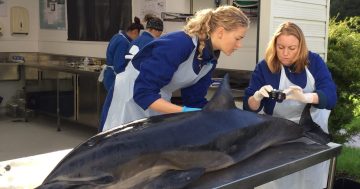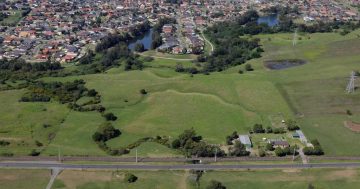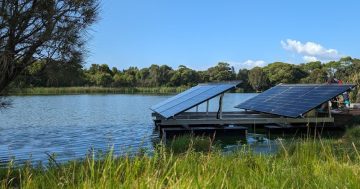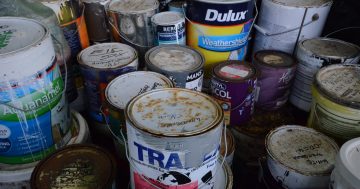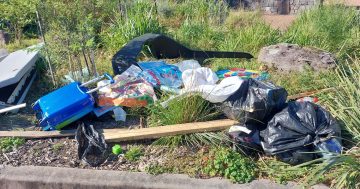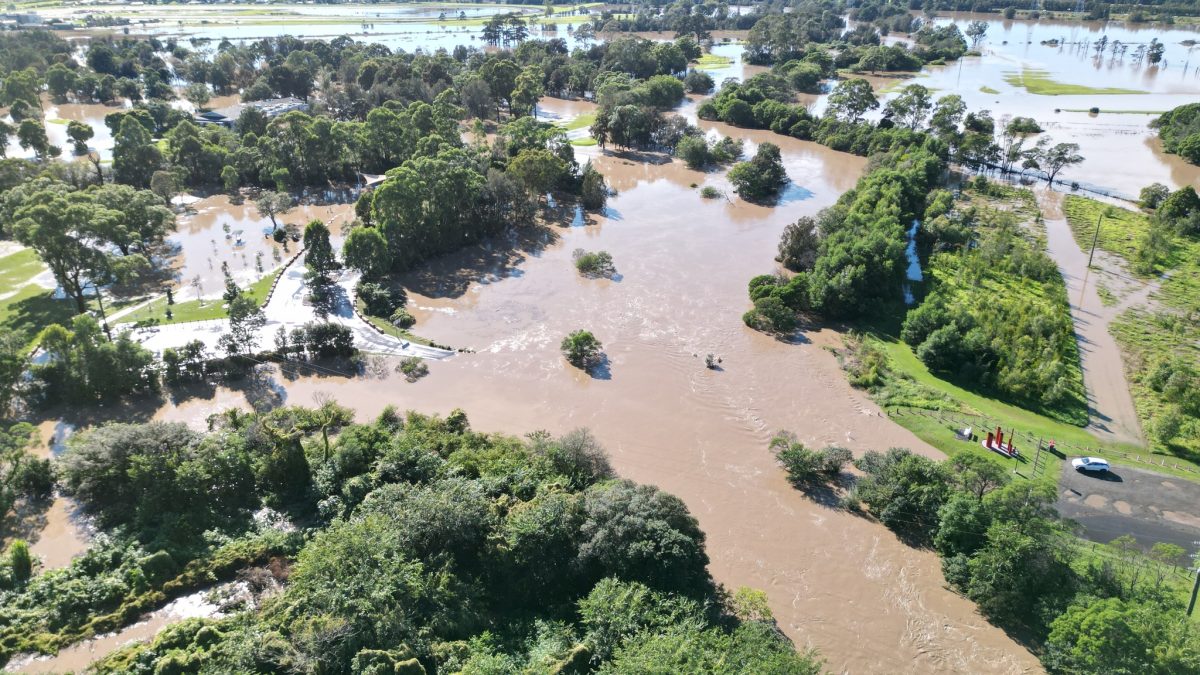
Mullet Creek in flood. Photo: Michael Hughes.
High levels of toxic chemicals have been detected in platypus habitat around Avondale.
The NSW Environment Protection Authority (EPA) will sample groundwater and surface water on properties east of the Huntley Waste Emplacement, known as the Huntley Landfill, at Avondale next week after testing found leachate could be leaving the site.
“This follows preliminary surface water sampling conducted by the EPA in September which found elevated levels of ammonia and PFAS in Heritage and Mullet creeks,” an EPA spokesperson said.
“EPA officers will be doorknocking neighbours downstream of the landfill, along the upper reaches of Mullet Creek, in Avondale this week to offer opt-in sampling of groundwater bores and creeks.
“Samples will be tested at a NATA accredited laboratory for general water quality indicators including PFAS.”
High-tech testing recently found platypuses live in Mullet Creek. There is no official plan to protect them, from any agency.
How they might be affected by leachate from landfill is unknown, however pollution is one of the biggest threats to their population.
The EPA spokesperson said the Huntley Landfill operators, Gerringong Property Holdings Pty Ltd, were issued with a prevention notice to ensure onsite issues were addressed.
“This includes the need to prevent offsite water pollution, and to undertake infrastructure improvements to capture leachate and ensure that only clean stormwater is discharged,” the EPA spokesperson said.
“PFAS in the environment does not necessarily indicate a health risk, however identifying sites that require investigation is an important precaution to reduce the risk of community and environmental exposure to PFAS.
“Test results will inform next steps if needed and individual results will be shared with landholders who have opted in for testing.”
PFAS, or per- and polyfluoroalkyl substances, are a group of man-made chemicals that have been used in a variety of products since the 1950s.
They are also known as ‘forever chemicals’ because they persist in the environment and can accumulate in people and animals over time.
High levels of exposure to PFAS can affect immune and reproductive functions, and increase the risk of some cancers.
Excess ammonia will dissipate over time, but can cause the death of aquatic animals and trigger algal blooms that deplete the water of oxygen and cause further die-offs.
“NSW Health advice is that surface water from farm dams, rivers and creeks can be contaminated by a range of sources but may be acceptable for non-potable uses such as washing clothes, irrigation, gardening, toilet-flushing,” the NSW EPA spokesperson said.
“People should not use groundwater for drinking, cooking and personal hygiene (including cleaning teeth and bathing) without testing and appropriate treatment.”










